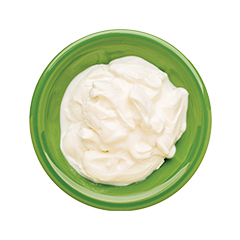
Comodidad De La Olla De Cocción Lenta: Pollo deshilachado a la barbacoa
- Home
- Live Well Blog
- Comodidad De La Olla De Cocción Lenta: Pollo deshilachado a la barbacoa
LIZ WEISS, MS, RDN & JANICE NEWELL BISSEX, MS, RDN
Imagina una cena tranquila y calmada donde toda tu comida marcha bien sin problemas! Esto es posible con la olla de cocción lenta. ¿Qué podría ser más fácil de preparar algunos ingredientes simples, añadirlos a la olla de cocción lenta, y luego alejarte mientras la cena e incluso el postre prácticamente se cocinan solos? Nuestras recetas de pollo deshilachado a la barbacoa y budín de pan de manzana y canela son deliciosas y, sin duda, tú y tu familia estarán abrigados y bien alimentados durante los días fríos de invierno.
Pollo deshilachado a la barbacoa
Si el sabor de la salsa de barbacoa le gusta a tu familia, amarán este pollo deshilachado a la barbacoa hecho fácilmente en la olla de cocción lenta con muslos de pollo deshuesado y sin piel, salsa de barbacoa y tres vegetales nutritivos: zanahoria, pimiento y cebolla. Puedes servir nuestro pollo deshilachado sobre arroz, en tacos suaves o envuelto en una hoja de lechuga.
Rinde entre 8 y 10 porciones
- 3 libras de muslos de pollo deshuesado y sin piel (aproximadamente 10 muslos)
- 1 zanahoria grande, pelada y rallada en los agujeros grandes de un rallador cuadrado (1 taza)
- 1 pimiento verde mediano o rojo, cortado en dados de 1/2 (1½ tazas)
- 1 cebolla pequeña, cortada en cubitos de 1/4" (1 taza)
- 1¼ tazas de salsa de barbacoa, dividida
- Añade el pollo, la zanahoria, el pimiento, la cebolla y 3/4 de taza de la salsa de barbacoa a una olla de cocción lenta de 5 o 6 cuartos de galón y revuelve para mezclar. Tapa y cocina a fuego lento hasta que las verduras estén tiernas y el pollo esté bien cocido, de 4 a 5 horas.
- Cuando hayas terminado, utiliza dos tenedores para triturar la carne. Puedes hacer esto bien en la olla de cocción lenta. Agrega la 1/2 taza de salsa de barbacoa hasta que la carne y las verduras estén bien cubiertas. Consulta las sugerencias para servir en la página siguiente.
Información nutricional por porción (aproximadamente ¾ taza):
260 calorías, 9 g de grasa (2,5 g de grasas saturadas), 500 mg de sodio, 18 g de hidratos de carbono, 1 g de fibra, 26 g de proteína, 30 % de vitamina A, 20 % de vitamina C
Una comida servida 3 FORMAS
Nuestra receta para el pollo deshilachado a la barbacoa es perfecta cuando estás cocinando para un grupo grande o si vas a alimentar a tu familia durante toda la semana. (O congela las sobras en bolsas herméticas para más adelante) Para añadir emoción a esta comida caliente y reconfortante y para evitar que los niños se aburran con el mismo plato de pollo tres días seguidos, cambia la forma de servirla.
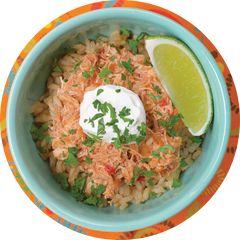
Tazón De Pollo
Coloca media taza de arroz integral cocido en un tazón y cúbrelo con el pollo deshilachado y la cobertura que elijas.

Tacos suaves
Calienta una pila de tortillas de maíz suaves y luego cubre cada una con el pollo deshilachado y la cobertura que elijas. Necesitará de una a tres tortillas por persona.
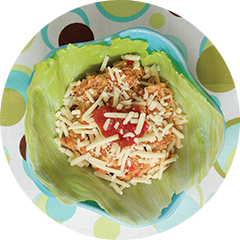
Tazas de lechuga
Utilice las hojas exteriores de una lechuga iceberg o Bibb para crear lindas "tazas" y luego, llenarlas con pollo deshilachado y la cobertura que tú elijas. Necesitarás de una a tres "tazas" de lechuga por persona.
Coberturas Opcionales

Rodajas de limón

Frijoles
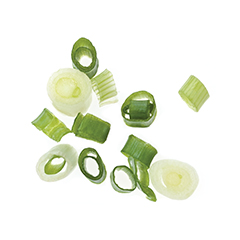
Cebollas de Cambray

Aguacate

Cilantro
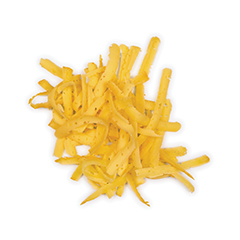
Queso Cheddar rallado bajo en grasa
